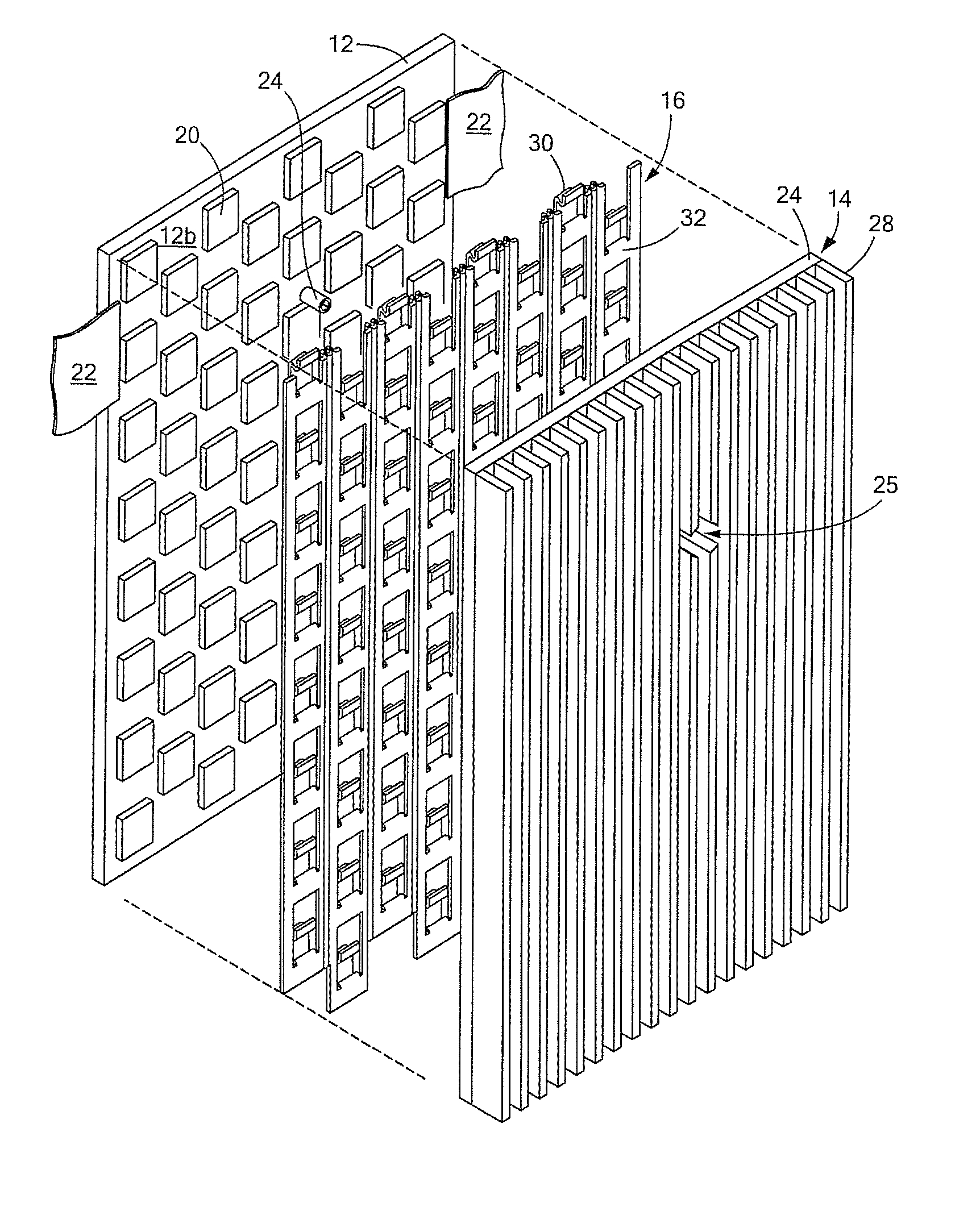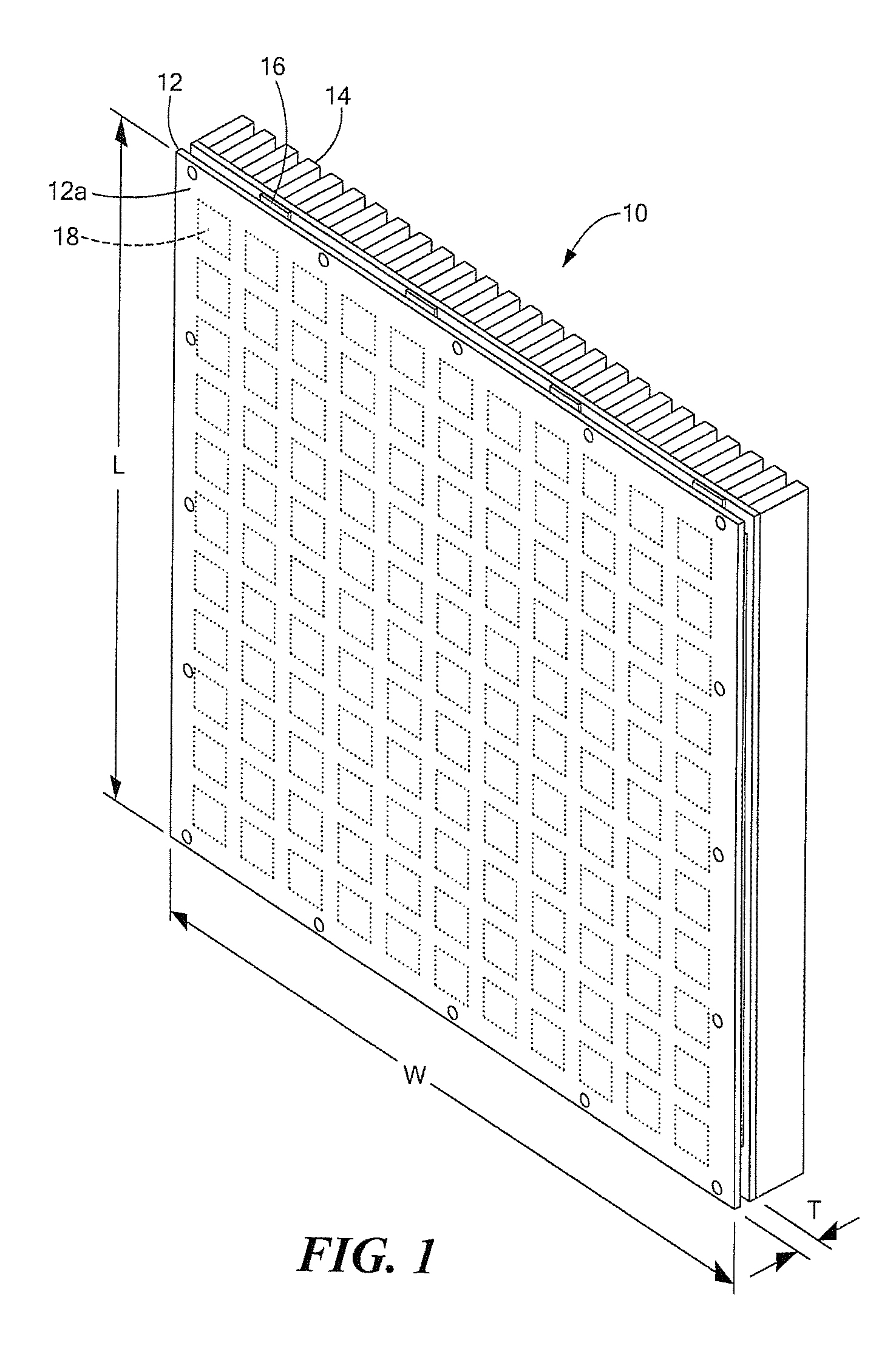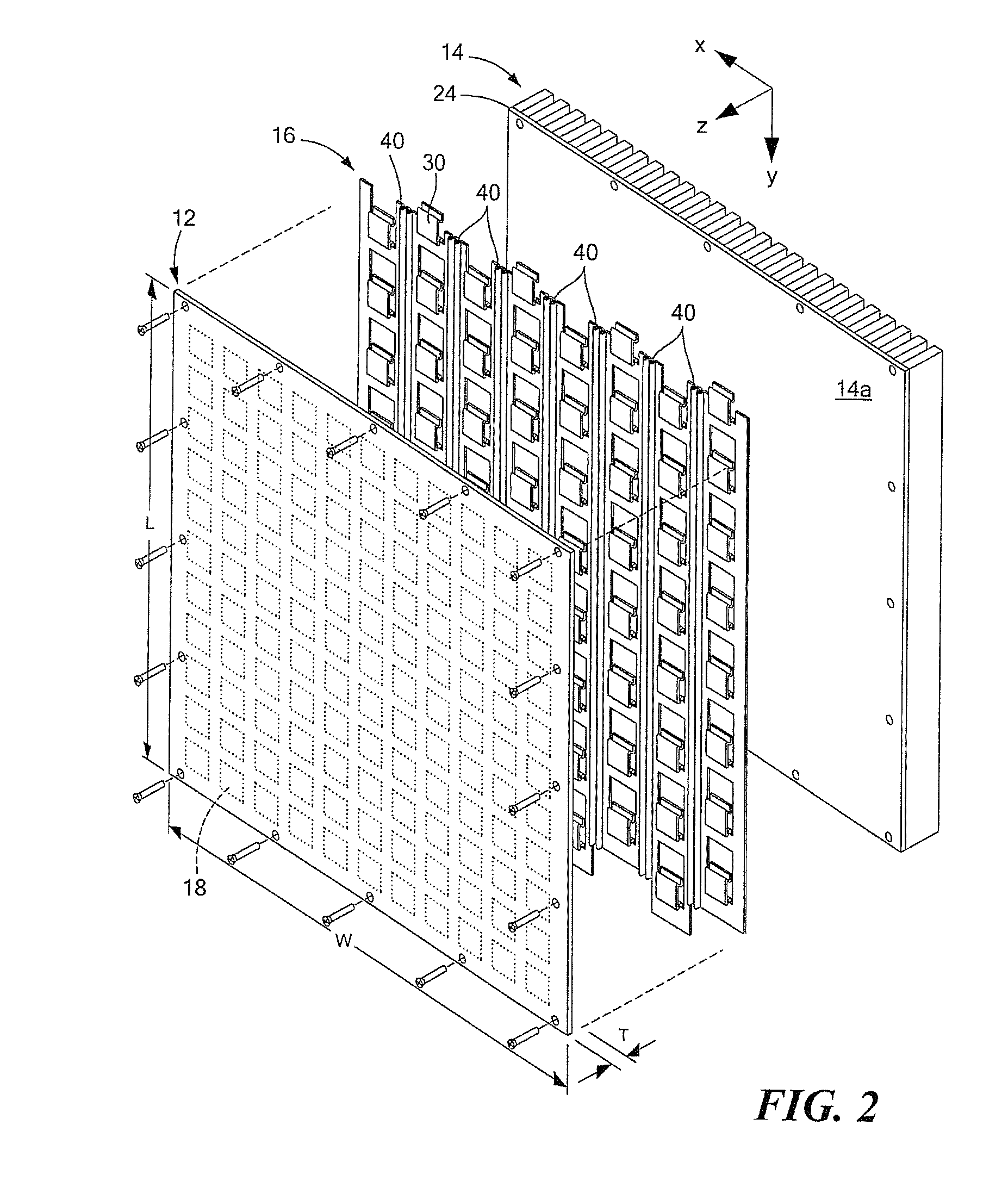Heat Sink Interface Having Three-Dimensional Tolerance Compensation
a heat sink and tolerance compensation technology, applied in the field of thermal management, can solve the problems of limited rf power level achievable using such a cooling method, and achieve the effects of improving performance and reliability, reducing junction temperature, and superior thermal path
- Summary
- Abstract
- Description
- Claims
- Application Information
AI Technical Summary
Benefits of technology
Problems solved by technology
Method used
Image
Examples
Embodiment Construction
[0038]Before describing the various embodiments of the invention, some introductory concepts and terminology are explained.
[0039]Described herein is a structure which acts as a mechanical and thermal interface between a heat generating device (e.g. a heat generating radio frequency circuit) and a heat sink. The interface compensates for mechanical tolerances in three dimensions. The interface is also sometimes referred to herein as a “thermal interface,” a “thermal cushion,” or a “heat sink interface.”
[0040]The thermal interface is described herein in the context of an “active panel array” antenna. It should be appreciated, however, that the thermal interface and concepts described herein, may also be used with other heat generating devices and is not limited to use with active panel array antennas. Rather, the thermal interface and concepts can be used with any radio frequency (RF) circuit which utilizes a heat sink. The thermal interface may also find application with other types ...
PUM
 Login to View More
Login to View More Abstract
Description
Claims
Application Information
 Login to View More
Login to View More - R&D
- Intellectual Property
- Life Sciences
- Materials
- Tech Scout
- Unparalleled Data Quality
- Higher Quality Content
- 60% Fewer Hallucinations
Browse by: Latest US Patents, China's latest patents, Technical Efficacy Thesaurus, Application Domain, Technology Topic, Popular Technical Reports.
© 2025 PatSnap. All rights reserved.Legal|Privacy policy|Modern Slavery Act Transparency Statement|Sitemap|About US| Contact US: help@patsnap.com



